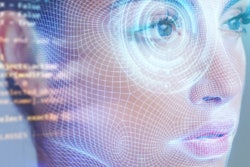
What's keeping radiologists from embracing artificial intelligence (AI) more quickly? It could be wariness about the technology and a lack of reimbursement, according to a new study by the American College of Radiology (ACR) Data Science Institute (DSI).
After an online survey in the spring of 2020, researchers led by ACR DSI Chief Medical Officer Dr. Bibb Allen Jr. found that only around one-third of the respondents were currently using AI in clinical practice. What's more, nearly three-fourths of those who weren't using AI had no plans to purchase it, mostly because they were unconvinced of its benefits.
"Despite initial predictions, concerns over inconsistent performance, potential decrease in productivity, and lack of reimbursement have made the actual use of AI in clinical practice modest," the authors wrote in an article published online April 20 in the Journal of the American College of Radiology.
To understand how the radiology community is using AI, the ACR DSI conducted an online survey between April 13 and May 20, 2020, and received 1,861 responses. Of the 1,861 respondents, 493 (33.5%) reported that they used AI in their practice. The researchers also performed a follow-up survey of AI users to learn more about how they were utilizing the technology.
Allen and colleagues found that larger practices were significantly more likely (p < 0.001) to use AI than smaller ones. However, nearly 20% of practices with fewer than five members indicated they were using AI.
Of those who were not using AI, approximately 72% have no current plans to purchase it, while about 20% plan to purchase AI tools in the next one to five years.
In perhaps a troubling sign for those anticipating broad adoption of AI in the near future, 80% of survey respondents not using AI in their practices indicated that they "see no benefit" to the technology. Furthermore, 31% felt they couldn't justify the expense or that purchasing AI was a decision beyond their control. In addition, other respondents stated they don't currently use AI due to concerns that it would decrease their productivity.
Given the high use of AI in breast imaging applications reported in the survey, it's possible that many may have considered older computer-aided detection (CAD) algorithms for breast imaging to be AI, the researchers also noted. This would further decrease the actual adoption rate of AI.
| Key findings of ACR DSI survey on use of radiology AI | |
| Most common reported use of AI | |
| Image interpretation | 52% |
| Worklist management | 15% |
| Image enhancement | 11.9% |
| Operations | 11% |
| Measurements | 9.9% |
| Most popular AI image interpretation applications, by body area | |
| Breast | 45.7% |
| Chest | 36.2% |
| Head | 30.1% |
| Abdomen | 14.6% |
| Extremities | 6.1% |
| Most popular AI image interpretation applications, by modality | |
| CT | 38.8% |
| Mammography | 35.9% |
| MRI | 20.5% |
| Radiography | 13.1% |
| Ultrasound | 6.7% |
Performance concerns about AI were also evident -- even among AI users. When asked about how AI was performing in their practice, 461 (94.3%) reported that AI performed inconsistently. Only 28 (5.7%) indicated that AI always works and 13 (2%) said AI never works.
"However, of those radiologists using AI in their practices, even though 95% would not trust AI algorithms to run autonomously, most were satisfied with their overall experience and found AI provided value to them and their patients," the authors wrote.
Given these overall results, education about the potential benefits of AI in all practice types will continue to be important, Allen and colleagues noted.
"However, more work needs to be done to mitigate the barriers to AI implementation before its full potential is realized," they wrote.




















